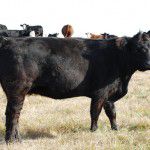 As many of our readers know, our publisher was chosen as a McDonald’s All-Access Mom, to see behind the scenes at McDonald’s Canada. Yes, the experience included meeting and moo-ing at a bunch of cows, as well as a potato farm, chicken plant, restaurant visit, Hamburger University and head office. As part of a promise to answer all of our readers’ questions, we’re publishing a Q and A for each trip. Here’s the beef. (More beef jokes in the main article on the trip).
As many of our readers know, our publisher was chosen as a McDonald’s All-Access Mom, to see behind the scenes at McDonald’s Canada. Yes, the experience included meeting and moo-ing at a bunch of cows, as well as a potato farm, chicken plant, restaurant visit, Hamburger University and head office. As part of a promise to answer all of our readers’ questions, we’re publishing a Q and A for each trip. Here’s the beef. (More beef jokes in the main article on the trip).
Q. Do they use hormones in what the cattle are fed?
A. Some farmers decide to use hormonal growth proponents and this is a business decision. For the farmers, there are costs associated with the hormones, and they must weigh the cost/benefit for their business.
Q. What are hormonal growth promotants?
A. Hormonal growth promotants are in the form of naturally occurring sex hormones which are administered to animals in order to improve an animal’s ability to use nutrients efficiently. Health Canada has approved three natural hormones and three synthetically produced hormones for use in cattle in Canada.
Q. What benefit is there to using hormones?
A. When these are used, the animal uses its feed much more efficiently. This means that the meat will contain more lean meat and less fat in the end. There can be more growth using less feed, resulting in less expensive beef for the consumer.
Q. How does the Canadian Government monitor the use of growth hormones?
A. In addition to the strict requirements which must be met in order to obtain approval to sell, and to use, growth promoting hormones in Canada, Canada’s national food safety agency, the Canadian Food Inspection Agency (CFIA), conducts regular monitoring programs in which thousands of samples of all meat products are analyzed to ensure that any drug residues which remain in meat are well within lawful, and safe, limits. Results of these monitoring programs are published regularly by the CFIA. Since residue levels of the natural hormones in beef are in the same range in both treated and untreated animals, Canadian regulatory authorities have concluded that it is not necessary to establish so-called safe limits of the natural hormones. CFIA monitors for residues of the synthetic hormones and Canadian regulations do not permit residues of any of the synthetic hormones to be present in meat. And year after year, Canadian beef has been in virtually 100 per cent compliance, that is, there are no residues in the beef.
Q. What about bacteria, Mad Cow Disease (BSE) and E. coli?
A. BSE control and testing happens both on the farm (sick-looking animals are isolated and tested) as well as at McDonald’s-approved primary meat processing (ie. slaughterhouse) suppliers. Canada does 40 times more than the global standard in terms of BSE prevention. Now, feed bans exist where the food chain is even more protected from contamination. Recent cases of BSE existed in older animals that were alive prior to the feed ban. In the last 3 years, there have been more than 100,000 animals tested with only 3 positives.
Beef is tested for E. coli 0157:H7 before it arrives at the facility. Any beef that tests positive for E. coli 0157:H7 never goes back into the McDonald’s food chain. In addition, the Cargill facility tests the incoming beef again for 0157:H7 as well as other types of bacteria according to the McDonald’s food safety standards. Quality checks and tests are also done on the finished patties. Test results on every batch of patties are seen prior to any box being released via the distribution networks.
Q. How do you make sure employees don’t lose their temper with animals at all stages of the process?
A. The CFIA has a Code of Practice related to animal welfare. In addition, there is a certified livestock transport program created by the Alberta Farm association to ensure humane treatment of animals. At the primary processing facilities, everyone who works there all go through animal welfare training. There is 3rd party video monitoring at all primary processing facilities. This technology can detect sharp movements and employees are always held accountable. If any facility ever fails an audit, McDonald’s may disapprove them as a supplier of beef.
Q. Is meat washed with ammonia?
A. No. Ammonia is only present within the refrigeration system to cool down the meat and never comes into contact with the meat itself. The refrigeration system used to run on Freon and it is now run on ammonia.
For our publisher’s full article on McDonald’s beef, please see the All-Access Microsite.
